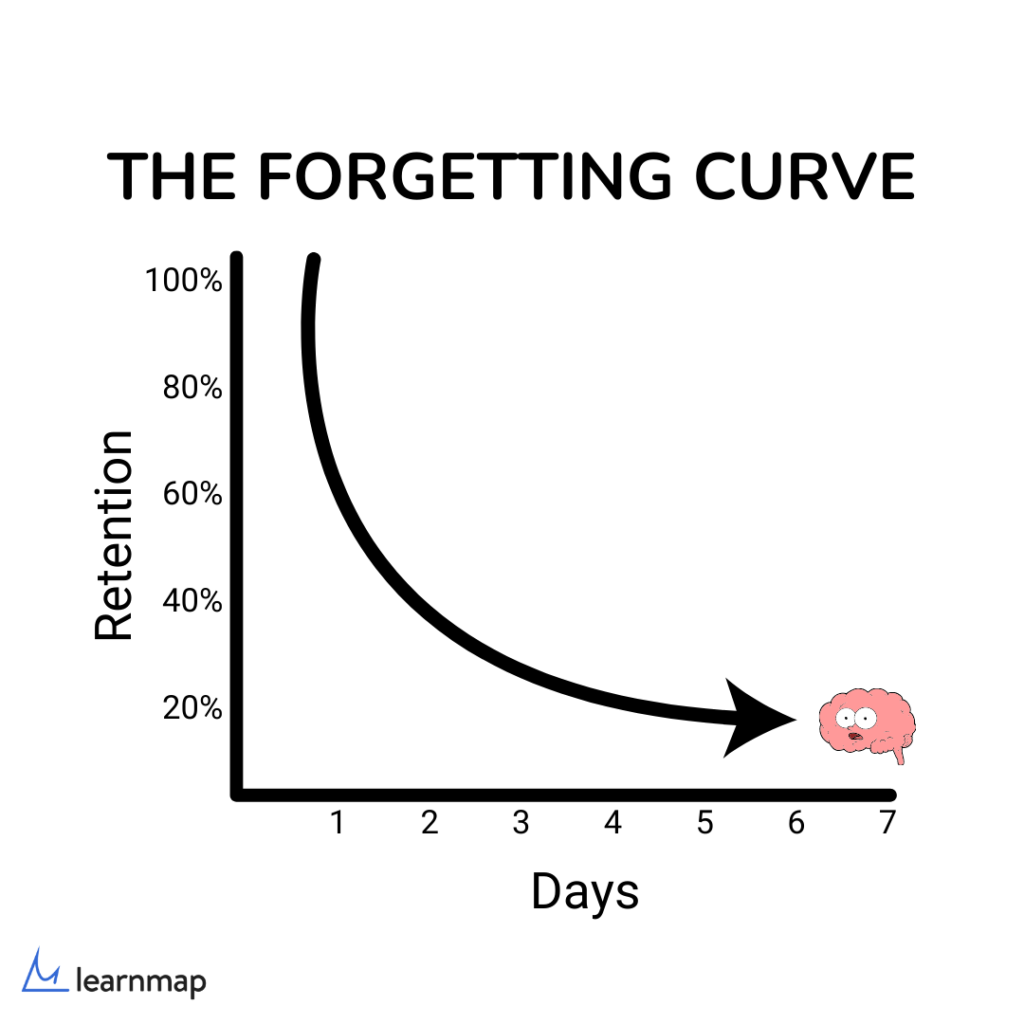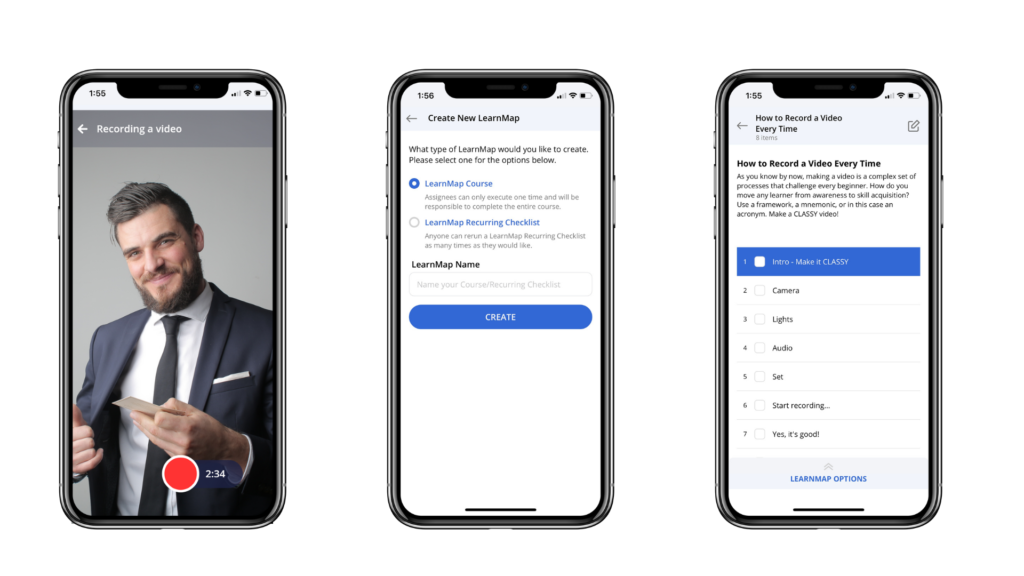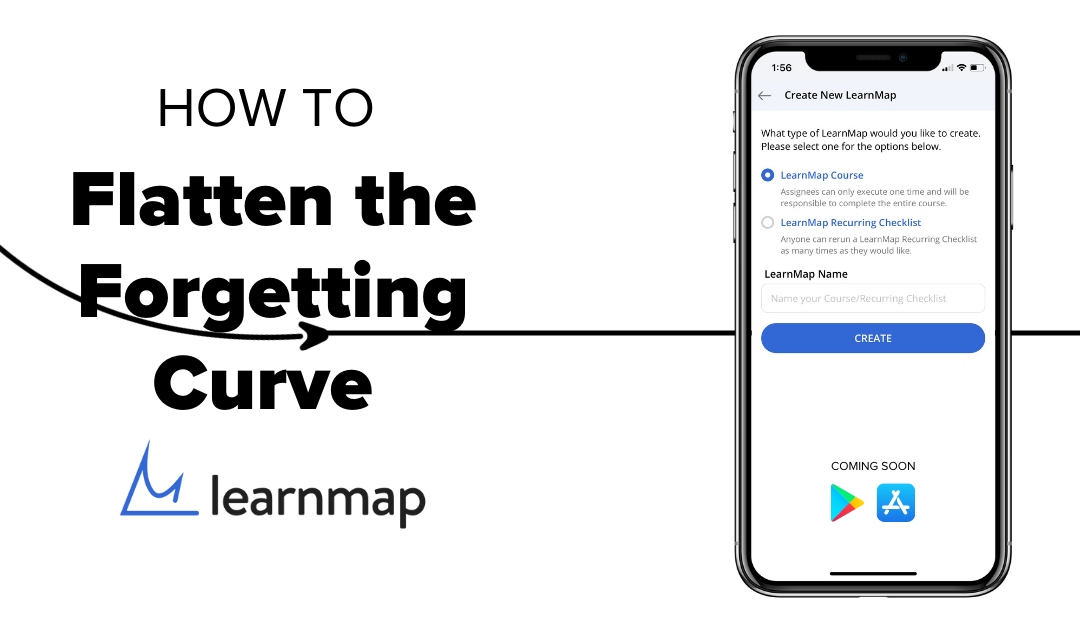This post will define the forgetting curve, moments of need, and microlearning. In the weeks that follow, there will be practical checklists to help you turn existing content into chunks of microlearning – or, dare I say “micro-remembering.” Maybe not, that’s ridiculous. What I am talking about is creating little reminders to not forget. Teeny, tiny, bite-sized nuggets of info that help your people remember!
“Real learning happens as we work. Research shows that 80 percent of learning in the workplace occurs on the job, rather than in formal training sessions. A good performance support strategy supports this informal learning so that productivity and successful performance are achieved with reductions in both learning time and its cost.”
Innovative Performance Support: Strategies and Practices for Learning in the Workflow, by Bob Mosher co-written with Conrad Gottfredson
The problem
After any type of “official training,” your employees forget what they learned. However, all is not lost if you can take control of the forgetting curve at crucial moments of need through strategies such as microlearning. These three phrases may seem like mere buzz words, but I’ll show you how they can play a key role in helping your people remember what they need to when they need to.
The Forgetting Curve
Here’s what we know about forgetting.
Fact – We forget 90% of what we learn within the first week.
Yup, 90%.

This is called the “forgetting curve.” The term comes from an Ebbinghaus memory study from the 1880s. It is still relevant today, as a team replicated the same study in 2015.
The good news is that you can take action to flatten the curve by helping people remember or stay connected to the knowledge they need. This is paramount to the employee and financial success.
You might be thinking, “Duh!” But then why is the forgetting curve still a problem? Helping people stay connected to knowledge is a lot harder than it seems. However, there are some specific strategies and solutions that are perfect for tackling the problem.
To flatten the curve, of course, you need to reinforce the training on a regular basis. However, it’s important to look at your initial training or learning experience and focus on improving clarity, making it relevant to the learner, and making it interactive
(Source: What Is The Forgetting Curve (And How Do You Combat It)?).
The reinforcement of training is most effective when it occurs at the right time – whether that is on the job or when your people are in “learning mode.” You can determine when “the right time” is for your team by considering the 5 “moments of need” and how they relate to your specific organization’s work and learning flow.
Moments of Need
Conrad A. Gottfredson and Bob Mosher originally penned the “moments of need” concept. They are leaders in innovative performance support. Here’s how they describe it:
The 5 moments of need is a framework that enables learning in the flow of work, while employees are doing their work. It guides the development of a performance support infrastructure that enables learning ahead of change and optimizes the business impact of the traditional training.
If you’d like to learn more, here is a brief video that explains the 5 Moments of Need:
To flatten the forgetting curve we need to think about how learning is incorporated in the flow of work. There are times we need to learn something new in the middle of a task or project, and then right away we may need even more knowledge about the new thing we just learned. The moment of “real life” application is where most organizations often stop their training and learning experiences.
The 5 Moments model suggests that we also need to support our people at the exact time they need to apply new knowledge or when something about the work itself changes which requires relearning or unlearning. Finally, we also need to help people solve problems while they are working.
To recap, the 5 moments of need are:
- Learning for the first time
- Learning more
- Applying what you learned
- When things go wrong
- When things change
Most organizations train their employees with new information and then provide more information as it becomes available. This is most commonly done with live training via webinar, facilitation in a classroom, and/or eLearning courses delivered through an LMS. This one-and-done training approach yields to the forgetting curve. It can feel random to the employee. It may feel important for a day or week or a month, but emphasis fades over time. Context is lost! However, if you are providing valuable information that directly relates to their work exactly when they need it, the training becomes much more effective and efficient.
One way to make this type of learning happen is to create microlearning.
Microlearning
We’ve covered how quickly people forget (the forgetting curve) and how we can help them remember by providing them knowledge boosts when they “need” it, so let’s look at microlearning as a solution to help flatten the curve and support the performance of your employees.
First of all, what is it?
Definitions of what constitutes microlearning vary. ATD’s microlearning research report found that talent development professionals think that 13 minutes is the maximum amount of time something can last in order to be considered microlearning. Respondents also reported that the ideal length of a microlearning segment is 10 minutes, and that segments between two and five minutes were considered the most effective length for microlearning.
While it’s useful to know what length of microlearning is considered most ideal or effective, many experts argue that microlearning should not be tied to a particular length of time. Instead, it should be as long as it needs to be—no longer and no shorter. Microlearning should focus on essential content that is “need to know” instead of “nice to know.” (Source: What is Microlearning? )
Microlearning is all about bite-sized knowledge nuggets delivered to your learners on a regular basis. These nuggets can be released on a regular basis and made accessible at specific moments of need. Microlearning can take many forms depending on the content and the learners’ work environment. They can be mini-scenarios, knowledge checks, short videos, and more.
The key to microlearning as a successful strategy is two-fold. It has to be appealing or engaging and it has to arrive at a time of need. Since we covered the moments of need, let’s cover how microlearning can be appealing and/or engaging.
What the Data Tells Us
A 2020 mobile learning trends survey revealed a 72% increase in learner engagement with mobile learning. However, the Brandon Hall Group along with SAP Litmos conducted a study at a similar time that revealed only 31% of companies have a developed strategy to use mobile learning. Yet perhaps the most telling piece of data related to engagement or motivation is that LearnDash found that 70% of learners felt more motivated when training on a mobile device as opposed to a computer .
If we agree that mobile learning is rising in popularity and it is overwhelmingly true that it helps with engagement and productivity, then which tool do you choose?
Enter LearnMap!
LearnMap
LearnMap is a mobile and desktop tool that helps you flatten the forgetting curve. The tool offers you three ways to combat forgetfulness and support learning in the flow of work.
- Microlearning: You can build microlearning courses or experiences right in the app.
- On-the-job Checklists: There is a recurring checklist feature that allows you to provide “read, do” checklists for complex workplace tasks.
- Knowledge Base: There’s a dynamic knowledge base where experts and employees can ask questions, provide answers, and interact around the knowledge in the workplace.

LearnMap meets your people where they are – in their moment of need and fully engaged on their phones. Use LearnMap to create microlearning. The app pushes the content right to your learner’s mobile devices. By turning your formal training into microlearning, you can boost their memory and flatten the curve. Short learning courses and activities that focus on “need to know” content that supports the formal learning during onboarding, product launch, or skills training.
“The complexity of our collective knowledge has exceeded the capacity of any individual to get everything right” (Gawande – The Checklist Manifesto).
Enter the recurring checklist feature in LearnMap to empower “in the flow” of work learning! In addition to microlearning, we need to give our learners the ability to reference complex content. Mobile performance support combined with microlearning will sharpen skills, improve behaviors, and deepen awareness beyond the traditional one-and-done training experiences.
Finally, LearnMap has a built-in social learning component in the form of a dynamic knowledge base. For real, everyone googles for answers to things. And, we like to watch videos. LearnMap provides your learners with a private yet robust knowledge base and it’s video-friendly. Mobile video is easy to record right in the app. Your people can ask questions and then you can share the answers with video or text.
The three-legged approach to combat forgetfulness and support learning in the flow of work may be one of the best ways to improve training ROI. People will learn more, they will enjoy the “training” experience more, and this will lead to greater productivity.
Conclusion
The forgetting curve is something you have to contend with whenever you’re trying to communicate with or train people. People forget 90% of what you told them within the first week. That’s a big number. But understanding your team’s moments of need and utilizing microlearning through a tool like LearnMap can mitigate this problem. The 5 moments of need are when your team is: learning something for the first time, learning more about a topic, applying what they’ve learned, when things go wrong, and when things change. You can use microlearning to address these moments of need and help fight against that dreaded curve. Microlearning should focus on vital content that is “need to know” instead of “nice to know” and should be as brief or as long as that essential content requires. It should be straight to the point and as useful and engaging as possible.
Helpful Links:
The Forgetting Curve Why We Forget, and What We Can Do About It
What Is The Forgetting Curve (And How Do You Combat It)?
https://elearningindustry.com/use-5-moments-of-need-model-in-corporate-elearning
https://www.5momentsofneed.com/


